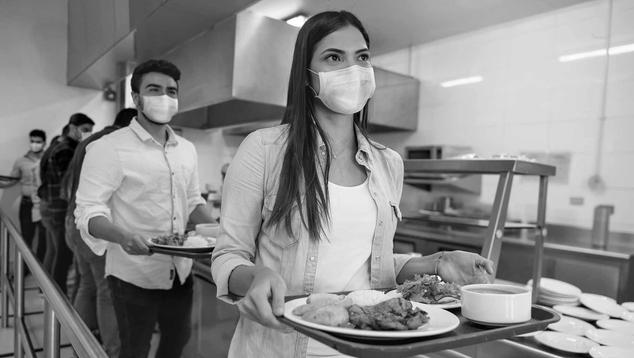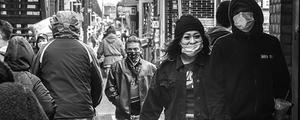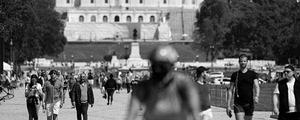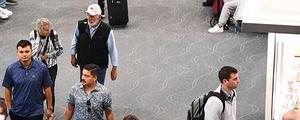Story Highlights
- Largest weekly declines in avoiding small gatherings, public places
- Percentage mostly or completely isolating themselves at new low
- Sharp uptick in percentage who visited restaurants
WASHINGTON, D.C. -- Significantly fewer Americans say they are avoiding public places, with the largest weekly declines seen to date in Gallup's trends. These include an eight-point decline in the percentage avoiding small gatherings, a six-point decline in the percentage avoiding public places and a five-point decline in the percentage avoiding air travel or public transportation.

Over a longer time span -- the past five weeks -- the largest change has come with respect to avoiding small gatherings, which has dropped a total of 21 points. Meanwhile, there have been double-digit declines since mid-April in avoiding public places and public transportation.
The latest results are based on May 11-17 interviewing of members of Gallup's probability-based online panel.
In addition to the fewer Americans avoiding public places, Gallup now finds a new low of 55% saying they are "completely" or "mostly isolating" themselves from people outside their household, continuing an ongoing decline. The current figure is now lower than the 58% recorded in late March, before most states had issued shelter-in-place orders. In recent weeks, most states have let those shelter-in-place orders lapse or have eased stay-at-home restrictions.
Importantly, even as fewer Americans are avoiding public places and isolating themselves, majorities still indicate they are doing so. The most common response for Americans, then, is to exercise caution in returning to normal activities amid the coronavirus pandemic.
The tendency toward a cautious return as restrictions are lifted is also evident in the 71% of Americans who say the best advice for healthy people is to stay home as much as possible to avoid catching or spreading the coronavirus. The remaining 29% say it is better for healthy people to live their lives as normally as possible to avoid disruptions to work and business. The percentage who are advocating for people to stay at home is down, however, from 87% in mid-March.
Americans' worry about personally catching the coronavirus has eased a little, currently at 51% down from 57% in early April.
Spike in Restaurant Visits Last Week
Some states have reopened restaurant dining areas; restaurants had largely been limited to providing take-out or delivery orders to patrons during the pandemic. Last week, 21% of U.S. adults indicated they had visited a restaurant in the past 24 hours, a sharp increase from 13% the week before. The question did not indicate whether people dined at the restaurant or got takeout, but the increase indicates people feel more comfortable about going outside their home to get food than at any point during the coronavirus situation. The increase in restaurant visits is generally observed in every major demographic subgroup.
Last week also saw a further increase in Americans' reports of visiting someone else's home, now 23%, up from 19% a week ago and 13% near the end of April.
Meanwhile, reported visits to work and grocery stores have leveled off after recent increases, but the poll did find an uptick last week from 20% to 25% in the percentage who report visiting other types of stores.
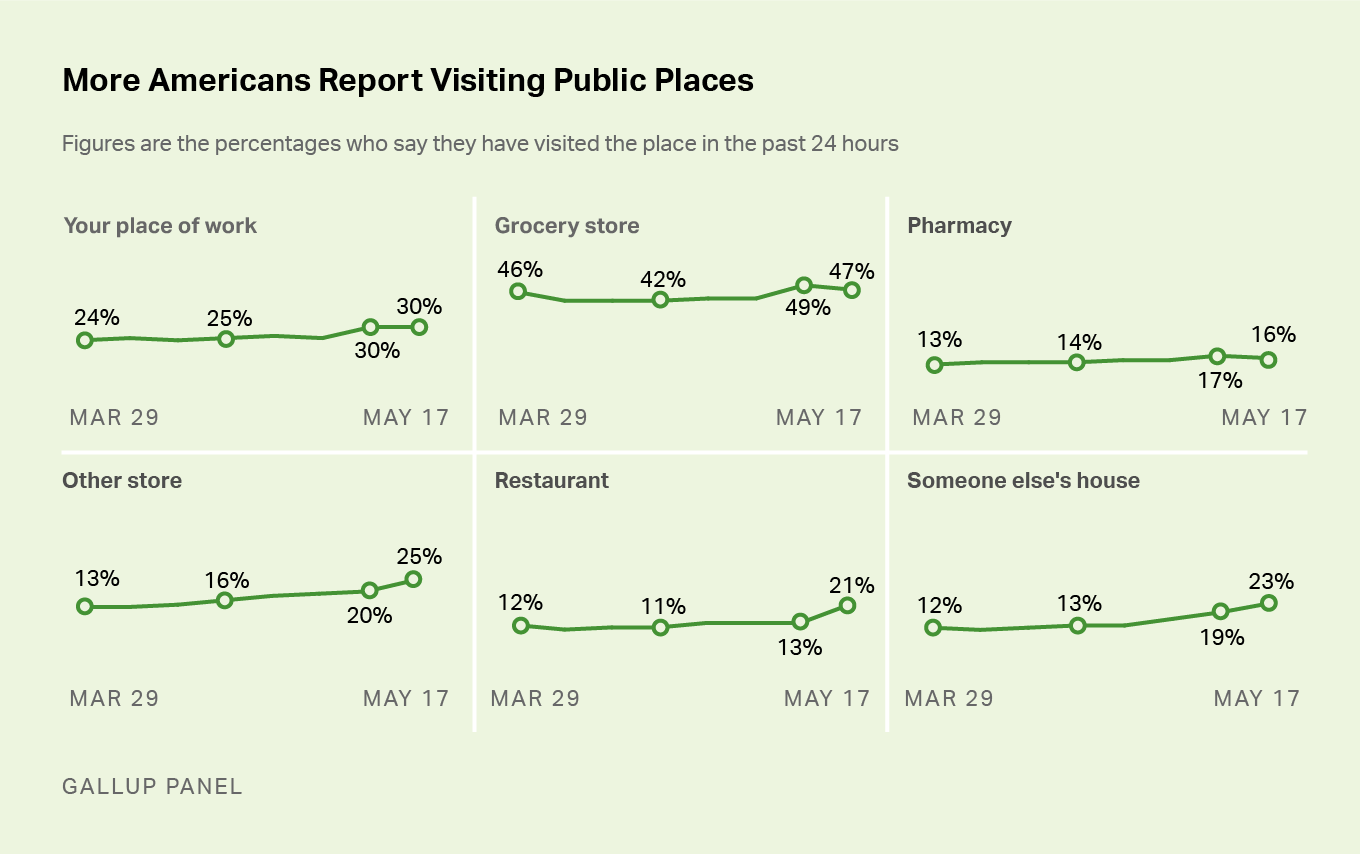
Implications
COVID-19 remains a threat to U.S. public health, but states have shifted their focus from slowing the spread in order to reduce pressure on health systems, to incrementally reopening businesses to prevent a deeper recession but still keep employees and customers safe. An increasing percentage of Americans have taken advantage of the eased restrictions to venture out in public. However, the public continues to exercise caution -- 79% say they wear facemasks when out in public, and a majority still say they are avoiding going to public places and are mostly, if not completely, isolating themselves from people outside their homes.
It is becoming increasingly clear that simply easing or lifting restrictions on citizen activity is not sufficient for most Americans to want to resume their normal lives. Recently, Gallup found targeted quarantines of those infected with the coronavirus and improved medical therapies to treat it are the most important factors Americans are taking into account in deciding when to get back to normal.
Learn more about how the Gallup Panel works.
